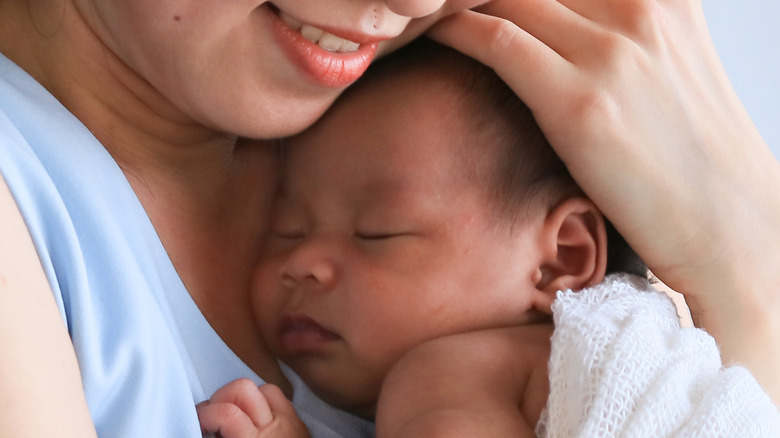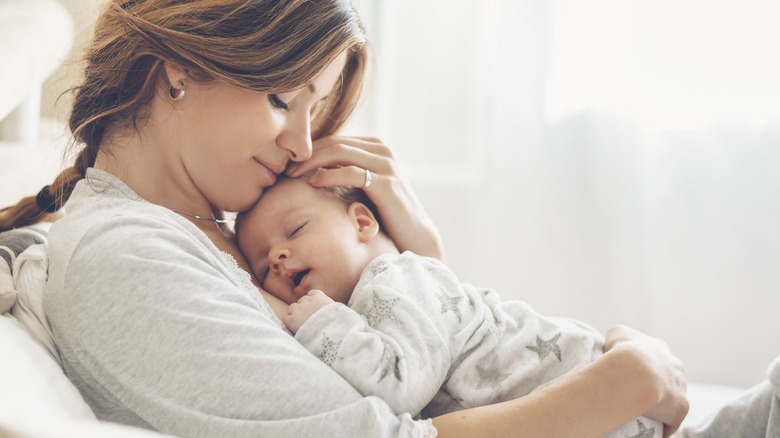You Have 94 Fewer Bones Than You Did As A Baby. Here's Why
The human body is a remarkable, sometimes downright impossible thing. It can heal itself, it can recover from the most appalling injuries, and it can perform absurd athlete feats. All it really asks in return is that you give it some food and water every now and then and let it sleep when it needs to.
Science still can't explain away some of the body's more confusing capabilities, but there are countless things that are known and understood about our fleshy homes. Here's one fascinating fact you may already know (per Healthline): the human adult skeleton is made up of 206 bones. From the femur to the fibula, there are enough to make any biology student's head spin.
Here's the real kicker, though: despite the fact that babies are, as a general rule, super, super small and adorable, they actually have a lot more bones than adults do: 300 of them in all. What's the reason for this disparity? Fortunately, that isn't a mystery.
No bones about it
Healthline goes on to explain that a developing baby's bones are largely formed of cartilage. This allows them to move, shift and position themselves awkwardly but safely during the pregnancy. Once they arrive in this bad old world of ours and begin to grow, however, a lot of that cartilage becomes the tougher tissue that makes up our creaky adult bones (per Britannica): calcium phosphate and collagen, among other things.
The process of cartilage changing is called ossificiation. According to BBC, ossification sees cartilage cells accumulating in "growth plates" on longer bones. The cells die and are replaced by bone. Over the course of all this, those teeny baby bones fuse together. It's a gradual process that continues into puberty, marking yet another huge physical and fundamental change a young person goes through during that time. But why is all of this fusing necessary in the first place?
According to Sarah Marcus, in 2016 a biological science PhD candidate at Binghamton University, New York (via Press Connects), "Most of these unfused bones are located in the newborn's skull." Furthermore, "The narrow human pelvis is actually too small for a newborn to fit through ... the unfused skull bones make the baby's head just flexible enough to shift itself through the birth canal." Meanwhile, cartilage kneecaps and other bones that will later fuse together support the child's growth and also limit the risk of injury. What complex creatures we are.

